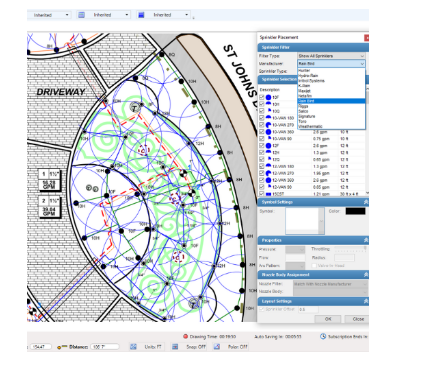A thriving, healthy landscape is not achieved by accident. Whether it’s a lush garden, a sprawling park, or an expansive agricultural field, every flourishing landscape owes much of its success to an efficient and well-planned irrigation system. Proper irrigation design is the backbone of sustaining plant life, conserving resources, and ensuring a vibrant environment. Beyond just watering plants, it plays a crucial role in creating balance, saving costs, and maximizing efficiency. Here’s an exploration of the key benefits.
1. Maximizing Water Efficiency
One of the most important benefits of a well-planned irrigation design is water conservation. Properly designed systems distribute water evenly and avoid waste through overwatering or runoff. This efficiency is essential in regions facing water scarcity or drought, where every drop counts. By targeting specific areas with the right amount of water, plants get exactly what they need to thrive without unnecessary expense or effort.
2. Promoting Plant Health
Watering too much or too little can result in major issues like root rot, plant wilting, or stunted growth. An efficient irrigation system eliminates this uncertainty by delivering water evenly and consistently to all parts of the landscape. Regular water schedules tailored to plants’ needs encourage stronger roots, better growth, and ultimately, healthier and more resilient plants.
3. Saving Time and Reducing Labor
Manually watering a large outdoor space is both time-consuming and labor-intensive. A well-planned irrigation system automates much of the process, allowing property owners or managers to focus on other essential tasks. With technologies like timers and smart irrigation systems, maintenance becomes simpler, efficient, and less reliant on manual intervention.
4. Preventing Soil Erosion and Runoff
Ineffective or poorly thought-out irrigation systems can lead to soil erosion and water runoff, resulting in nutrient loss and damage to the landscape. A well-designed system prevents these issues by carefully controlling the flow and distribution of water. By delivering water directly to the plant roots, it ensures the soil structure remains intact while minimizing the chances of over-saturation.
5. Cost-Effective in the Long Run
Investing in a well-thought-out irrigation design upfront may seem expensive, but it cuts costs in the long run. Efficient use of water reduces monthly utility bills, and healthier plants mean less spending on replacements, fertilizers, or pest control. Additionally, automating irrigation saves on labor costs and prevents unexpected expenses from water-related issues like flooding or erosion.
6. Supports Sustainability and Environmental Goals
A sustainable landscape doesn’t just meet aesthetic needs—it also minimizes environmental impact. By using less water, reducing waste, and preserving soil nutrients, optimal irrigation supports eco-friendly and sustainable practices. Many advanced irrigation systems today also use technology to monitor and adjust water usage based on real-time conditions, contributing to greener management methods.
7. Enhancing Landscape Aesthetics
A healthy, vibrant landscape is more than just pleasing to the eye—it enhances the overall value and usability of any space. Whether it’s a garden, sports field, or agricultural land, lush greenery created through effective irrigation increases the appeal of the property and provides a welcoming atmosphere for people who use it.
8. Customization for Specific Needs
Every piece of land is unique, with its own set of challenges, including climate conditions, soil type, and topography. A well-planned irrigation system caters to these specific needs, ensuring that water is evenly distributed regardless of variations. This customization guarantees optimal growth and performance across the entire landscape.



